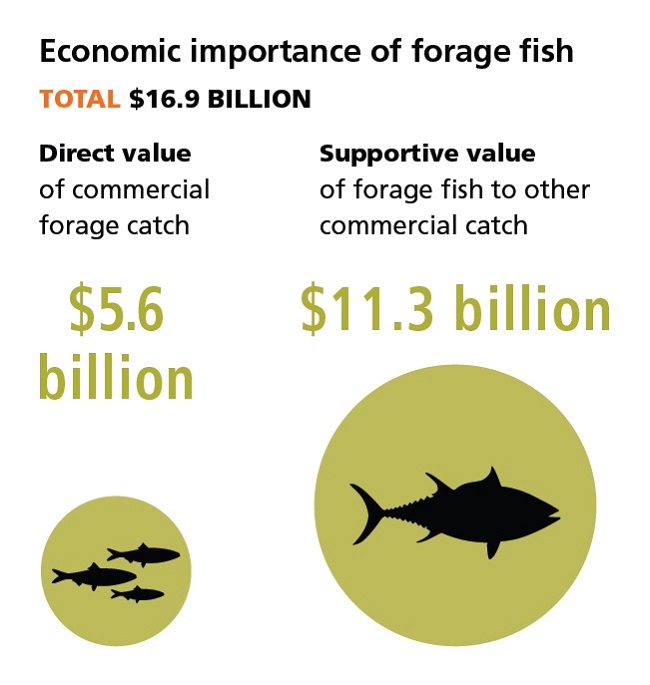Forage Fish and Europe
From Little Fish, Big Impact, a report from the Lenfest Forage Fish Task Force
On April 3, 2012, the Lenfest Forage Fish Task Force released Little Fish, Big Impact, the most comprehensive global analysis to date of forage fish management. The Task Force is a group of 13 preeminent scientists that formed to provide practical advice on the sustainable management of forage fish. Its report takes a broad perspective that can be applied to ecosystems worldwide, including the fisheries of the European Union. The Task Force found that:
- Forage fish populations are highly variable:
For example, North Sea sand eel abundance varies greatly from year to year, even without fishing, and Atlantic herring fluctuates on a longer timescale. In the Barents Sea, variable inflow from the Atlantic Ocean contributes to variability of both herring and capelin. There are similar fluctuations in Baltic Sea sprats and sardines in the Bay of Biscay. - Forage fish are vulnerable to overfishing:
Because they form dense schools—often called “bait balls”— forage fish are easily caught, even when their abundance is low. Fishermen might therefore be able to scoop up large numbers of forage fish during a natural population decline, greatly compounding that decline. In Europe, fishing at a time of natural decline was a major factor leading to a crash of herring in the North Sea in the 1970s. Improved management has probably prevented another crash. However, there is still a need for caution when the herring stock is in decline, especially because of modern technology that allows fishing fleets to efficiently find and capture schools of forage fish. Meanwhile, the North Sea sand eel has declined so sharply that fishing is currently prohibited. - Globally, forage fish are more valuable in the water than in the net:
The report estimates that the supportive value of forage fish left in the water as food for commercially valuable predators is $11.3 billion globally (in 2006 dollars), compared to a direct value of $5.6 billion.
- Management should be precautionary:
The Task Force recommends that fisheries managers take more explicit notice of the variability of forage fish and their crucial importance to marine predators. In most fisheries this means halving catch rates and doubling the minimum biomass of forage fish that must be left in the water relative to conventional management (see Chapter 7 of the report for details.) In the Barents Sea and North Sea, managers recognize these issues. In the North Sea, however, fishing limits are routinely exceeded, likely because of discards, and possibly because of illegal fishing.
Downloads
Fact Sheet: Forage Fish and Europe (PDF)
Downloads
Fact Sheet: Forage Fish and Europe (PDF)



